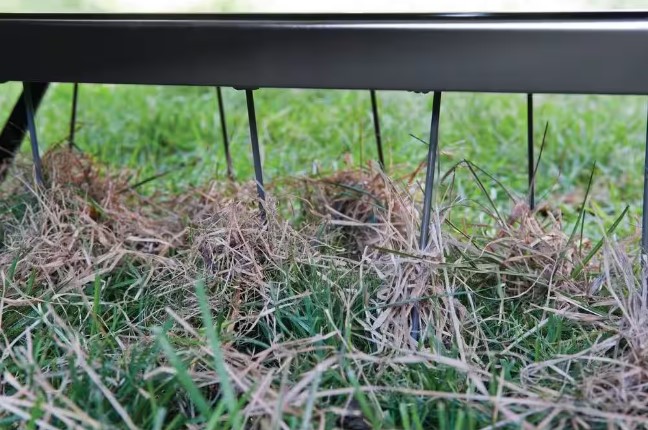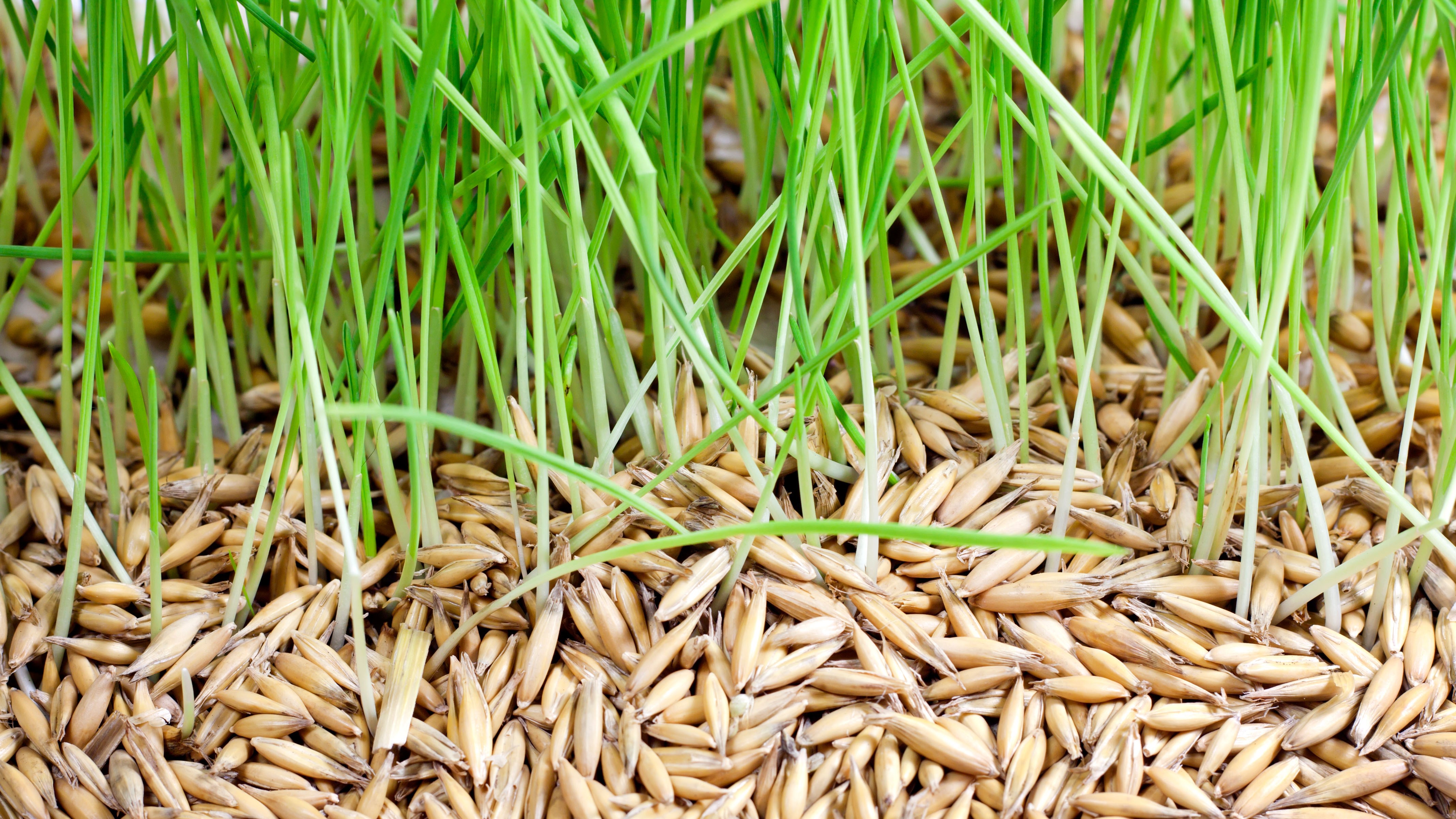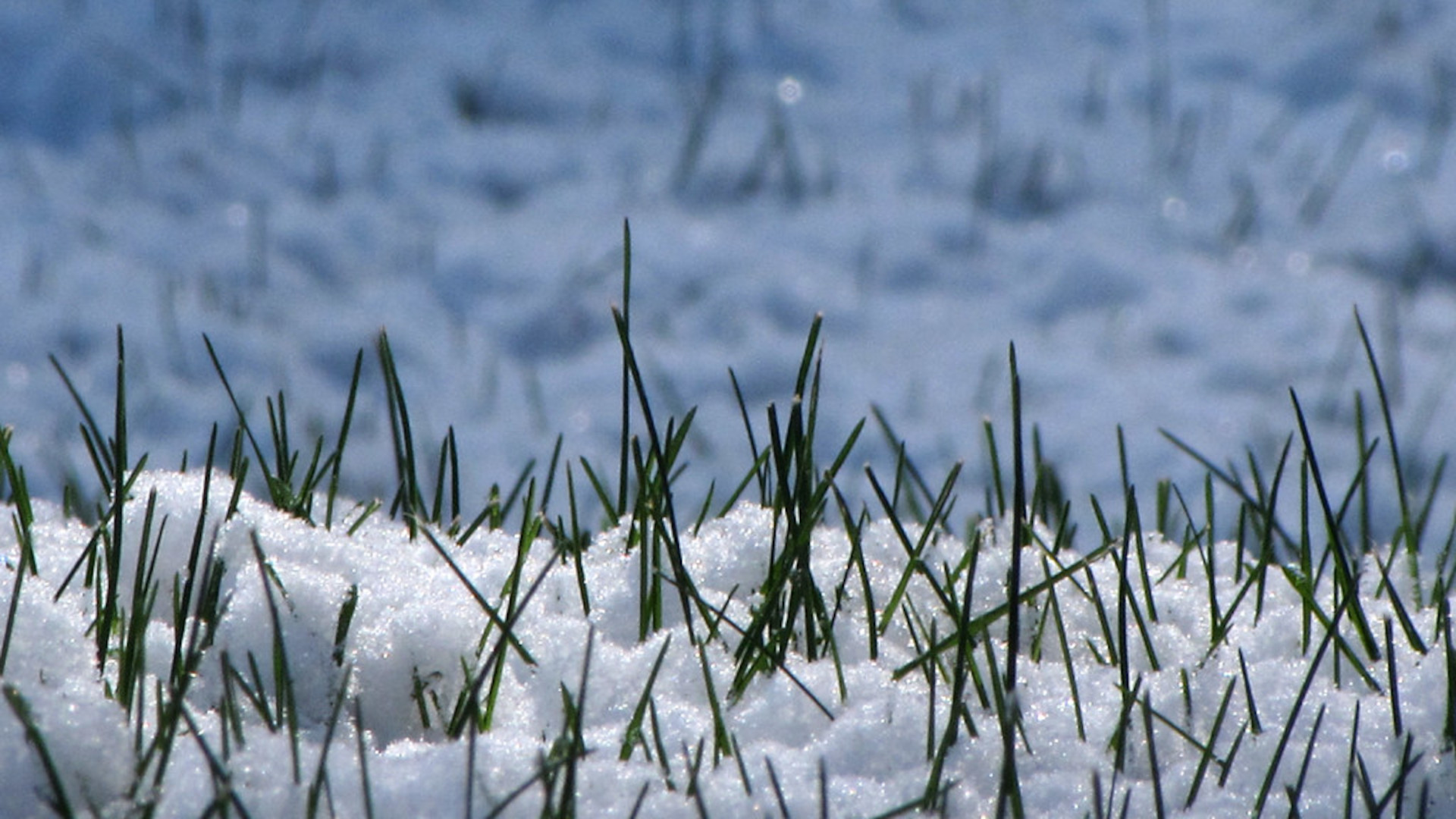7 riding lawn mower attachments that are worth the investment
Tow like a lawn care pro with these seven add-on tools for lawn tractors and zero-turn mowers.

Get some useful attachments to fix onto one of the best riding mowers, and you’ll have the ultimate lawn care machine – capable of several key tasks such as sowing, aeration and leaf collection, as well as cutting the grass.
Almost all riding mowers, including both lawn tractors and zero-turn lawn mowers, can be used with at least some attachments, most of which are towed behind the machine. Each attachment you use reduces the need to buy individual power tools for tasks like fertilizer spreading or dethatching, so they can sometimes save you space and money, as well as giving you a high-performing tool.
You can buy riding lawn mower attachments from retailers such as The Home Depot and Lowes (in the United States), and OnBuy (in the United Kingdom).

As a Sales Advisor at UK-based ride-on lawn mower specialist, Mower Magic, Sam Mant spends each day helping customers to find the right tools and machinery to meet their needs. “I keenly appreciate that a lot of lawn and garden equipment can be a big investment, so helping people choose the best options is vital and something I’m passionate about,” says Sam.
Sam Mant, a Sales Advisor at Mower Magic, has kindly provided some expert tips that we’ll share throughout this article. Also on hand with his expert advice is George Reister, a Product Management Director at Husqvarna, one of the world's leading manufacturers of ride-on lawn mowers
Most attachments are joined to a ride-on mower via a connector called a ‘universal hitch’. If you weren’t supplied with one of these when you purchased your mower, then you may need to buy a universal hitch to fix attachments to the mower. This one costs $16.99 via Amazon, for example.
7 riding lawn mower attachments that are worth the investment
1. Remove thatch with a dethatcher
Using a riding lawn mower with a dethatching attachment is one of the most efficient ways to dethatch a lawn.
Working manually, dethatching is hard work, as you’ll need to scrape a dethatching rake (or push an electric dethatcher) all the way across the lawn to pull up a good proportion of its thatch layer. For folks with large lawns, this could take days of back-breaking toil.
Sign up to receive the latest news, reviews, buying guides and deals direct to your inbox
It’d be a whole lot easier to use a tow-behind dethatcher attachment with your riding lawn mower. This attachment digs its prongs into the lawn while you drive the mower, effortlessly pulling up thatch along the way.
Another benefit is that riding lawn mower attachments such as the Brinly-Hardy 48 in. Tow-Behind Dethatcher ($189, Home Depot) often come cheaper than a good quality electric or gas-powered dethatcher.

2. A lawn roller with help to flatten things out
If you love the appearance of an even, healthy-looking lawn, consider adding a lawn roller attachment to your ride-on mowing inventory.
Tow-behind attachments such as the Brinly PRT-362SBH-A Poly Lawn Roller ($209, Amazon) use a heavy cylindrical roller to firm down the surface of the lawn, pressing grass roots closely into contact with the soil and leveling out lumps or irregularities in the terrain.
3. A cart can help shift things
There are countless uses for a cart hitched to your riding lawn mower, from moving cut logs or freshly trimmed overgrowth, to transporting pet supplies or construction materials.
If an item is solid and will stay safely in the cart, there’s a good chance you can move it using this riding lawn mower attachment.
The maximum load for a tow-behind cart attachment is given in pounds. Some carts can carry in excess of 1,000 lbs – although a far lower capacity model like the Titan Attachments 400 lb Poly Dump Cart ($229.99, Amazon) might be sufficient for your purposes.
“Not all carts and trailers are made equal – so look for one with decent extra features, whether it be an included liner, the ability to tip, or removable sides for unusual loads,” says Sam.
“Puncture-proof wheels can be the difference between a cart or trailer you love and one that is an endless source of frustration!”

4. Use a broadcast spreader to cover more ground
Overseeding is a great way to replenish a lawn that has become patchy due to problems such as disease or damage resulting from a heatwave. If you have a large lawn, scattering seed across the whole area is a lot of work – and that goes double if you’re seeding a new lawn from scratch.
Tow-behind broadcast spreaders cut this task down to size, by automatically scattering seed across the whole lawn area as you drive your riding lawn mower back and forth. Some models like the John Deere Tow-Behind Broadcast Spreader ($389, Home Depot) have special features, such as a shut-off lever to use when you drive over paved areas, and an automatic shutoff that stops the flow of seeds when the mower stops moving. You can sometimes use this type of attachment to spread other materials such as granular fertilizer, as well as seed.
“One big thing to bear in mind is that if you want to use a broadcast spreader in the winter to spread salt, not all spreaders will be suitable for that – so do your research and ask the retailer or manufacturer before you buy,” says Sam.
“Spreaders that are fitted or compatible with a rain cover are also a great idea, as many of the materials you might want to spread are water soluble.”

5. Collect fallen leaves with a dedicated collector
Got trees? A rake will work well as a leaf collector for households with small or medium-sized lawns – but if your lawn’s large enough to require a riding mower, you may benefit from a more efficient approach.
Here’s where a leaf collector attachment comes into play. These relatively expensive and complicated riding lawn mower attachments suck up leaves and other debris through a flexible duct and into a large container mounted on a wheeled base.
Most examples attach to the back end of specific, compatible mower models. For example, the Craftsman 1 Leaf Collection System ($461.99, Lowes) needs to be used with a mower from Craftsman’s T100, T200 or T2000 series. You can’t buy just any leaf collector attachment for any ride-on mower.
“A leaf collector attachment can potentially save you a lot of time and money compared to a handheld or wheeled vacuum,” says Sam.
“Try to use yours when the leaves are dry. This can be a bit tricky given the time of year when leaves tend to fall, but you’ll have much more success picking up dry material than you will wet.”
6. Increase air flow to the soil with an aerator
Aeration means making lots of small holes in the lawn, to increase the flow of air, water and nutrients to the grass roots.
A tow-behind aerator attachment makes this task super-simple, using a roller with an array of prongs to make holes in the ground at regular intervals. Reister adds that this attachment improves turf health and promote new growth, and says to: "Aerate when the grass is growing fast. For Northern grasses, do this in early spring or fall; for Southern grasses, late spring or early summer is best. Dethatch when the thatch layer exceeds ¾ inch, but only when the turf is healthy and growing."
This 40-Inch Spike Aerator model from Suchtale ($169.00, Amazon) will do the job nicely, although some folk prefer a plug aerator vs spike aerator, which will work more thoroughly.

George is a Director of Product Development at Husqvarna. With over 25 years' experience in the lawn care market, George has immense knowledge of ride-on mowers and their attachments. Husqvarna is one of the world's leading yard tool brands, and produces several celebrates ride-on lawn mower models.
7. Clear the snow from the lawn with a plow
If winters are harsh in your area, it might be worthwhile to consider a snow plow attachment for your mower. It is OK to prepare the lawn for snow, and cut it, but when areas of dense snow become compacted on the surface, this can put grass at risk of fungal disease.
Only certain ride-on mowers are suitable for snow plowing, as pushing snow requires a lot of power. For example, Reister shares that: "Husqvarna garden tractors are engineered to be a year-round tool for attachments, featuring high-torque engines, heavy-duty frames, and three levels of transmissions.
"Husqvarna tractors with Auto Diff Lock or Electronic Locking Diff provide traction and torque to both wheels, preventing slipping in wet or uneven conditions as you dig into the dirt or snow."
If your mower’s manufacturer makes a snow plow attachment specifically for the front of your riding lawn mower model, that’s a good sign that your machine is up to the task.

FAQs
Are all riding lawn mowers suitable for use with attachments?
Buying Guides
Best cordless lawn mower: top battery-powered lawn mowers to tackle your yard
Reviews
Worx Landroid S WR165 review: an intermediate-level robot lawn mower
STIHL RM 655 VS Lawn Mower review: a premium gas lawn mower which is a cut above the rest
DeWALT DCMWSP244U2 Cordless Self-Propelled Mower review: an efficient, long-lasting tool
Dewalt DCMWP600X2 60V MAX Cordless Push Mower review: lightweight yet powerful
Husqvarna Automower 450XH review: a fantastic, if flawed, lawn buddy
Mammotion Luba 2 AWD 5000 review: a tech-heavy robot lawn mower for large yards
Segway Navimow i105N robot lawn mower review: smarter, simpler, superior?
Most ride-on lawn tractors and zero-turn mowers can be used with at least some types of attachments. However, you should always check the mower manufacturer’s guidance before you go ahead and purchase attachments such as a cart or broadcast spreader.
“It all depends on the capabilities of the machine in question,” says Mower Magic’s Sam Mant.
“Most ride-on lawn mowers will include at least a tow bar or hitch (or can be fitted with one). These are typically a simple clevis pin hitch, and a lot of attachments use that kind of hitch as well.
“Some machines will have a more advanced PTO (Power Take-Off) system that will make them incredibly versatile and compatible with a huge range of different tools,” he says.
How should I choose the right attachments for a riding lawn mower?
The first step in choosing the right tow-behind attachments is to learn about your ride-on mower and its abilities.
“You need to understand what your machine is capable of. A 223CC rider-style mower isn’t going to be capable of plowing a field, for example,” says Sam.
“Also check what the manufacturer recommends as a maximum towable weight. The last thing you want to do is buy what should be a useful attachment, only to learn that your machine can’t budge it, or that it damages your machine when you try to use it.”
Sam also stresses the importance of finding attachments that have the right fixing to couple with the mower.
“Most will have a simple clevis pin hitch, but it’s well worth checking before you make your final purchase,” he adds.

Pete has reviewed hundreds of gardening products for titles including TopTenReviews, Ideal Home and the London Evening Standard, as well as writing articles on diverse topics for other publications such as The Guardian and BBC Good Food. Pete loves spending time in his yard – although, having just read The Day of the Triffids by John Wyndham, he is regarding his plants with a newfound suspicion.
